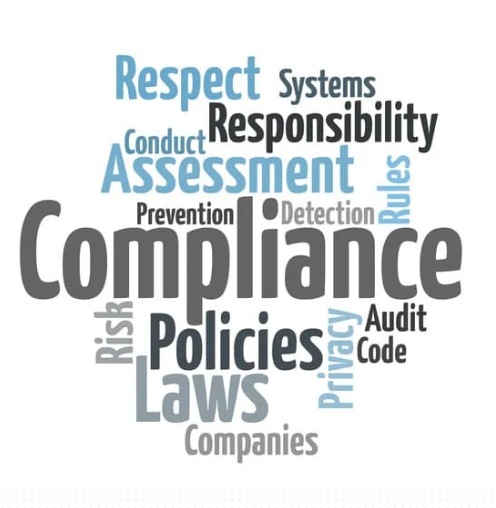- May 1, 2025
- Posted by: admin
- Category: Blogs

Author: Srishti Sharma
HR Coordinator, PARKER HR Solutions Inc.
Are you ready for the upcoming changes to Ontario’s Employment Standards Act? These new regulations will significantly impact both employers and employees, and staying informed is crucial to ensure compliance. If you’re uncertain about how to prepare your business or navigate these changes, you’re not alone. Here’s what you need to know.

The team at Parker HR Solutions Inc. recently attended the seminar titled “Changes Are Coming to the ESA – Are You Ready?” on April 23, 2025, hosted by HicksMorley and presented by Kathryn Meehan and Amy Tibble. This session provided a comprehensive overview of important updates to the Employment Standards Act (ESA). We’ll explore key insights from the seminar, highlighting the significant changes to the Ontario Employment Standards Act (ESA) and their impact on both employers and employees. These updates apply exclusively to workplaces in Ontario, Canada.
New Long-Term Illness Leave
The seminar highlighted several significant updates to job-protected leaves under the ESA, with a particular focus on the introduction of a new long-term illness leave, which will come into effect on June 19, 2025. Employees will be entitled to take up to 27 weeks of unpaid leave within a 52-week period if they are unable to work due to a serious medical condition.
- Eligibility for Long-Term Illness Leave
To qualify for this leave, employees must have a minimum of 13 consecutive weeks of service. Furthermore, they must provide a certificate from a qualified healthcare provider confirming their inability to work, along with the expected duration of the leave. The leave must be taken in full weeks, and its duration may be restricted to what is specified in the medical certificate.
Example: If Sarah, an employee with over a year of service, needs to undergo surgery, she could take up to 27 weeks of leave. In this case, her employer would need to manage her leave by adhering to the medical certificate’s specified duration and ensure that her benefits continue during her leave.
- Leave Benefits and Reinstatement
During the leave, employees are entitled to continued benefits, protection against reprisals, and the right to be reinstated to their same or a comparable position upon their return. Employees are expected to provide notice of their intention to take leave as soon as possible, should advance notice not be feasible.
- Duration and Limitations of Long-Term Illness Leave
If the medical certificate specifies a leave period exceeding 52 weeks, the employee’s entitlement remains capped at 52 weeks. The 52-week period begins either from the date the certificate was issued or the date the employee stopped working, whichever comes first. If the medical condition continues beyond this period, employees must explore other options, as ESA entitlements do not extend beyond 52 weeks.
- Extensions and Renewals
Long-term illness leave can be extended or renewed if the medical condition persists or if a new condition arises within the same 52-week period, provided the employee has not exhausted the 27-week maximum entitlement. If the condition continues into a new 52-week period, the employee may renew their leave entitlement.
- Employer Considerations for Long-Term Illness Leave
Employers should review how this new ESA leave interacts with existing contractual leave entitlements. If employment contracts or policies provide greater leave benefits, those terms must be honored. Employers should also ensure that their attendance management programs are updated and that benefits continuation obligations, such as health and insurance coverage, are maintained during the leave.
- Placement of a Child Leave
Employers must clarify whether the Placement of a Child Leave applies to both adoptions and foster placements. In addition, employers should address situations where an adoption or surrogacy arrangement falls through after the leave has commenced. Employers who offer top-up benefits for pregnancy or parental leaves should determine if similar benefits will apply to this new leave. It’s crucial that employers properly manage benefits continuation during the Placement of a Child Leave.
Effective July 1, 2025 – Information Requirements for New Employees
Under O. Reg. 477/24, employers with 25 or more employees must provide prescribed information to new employees in writing before their first day of work, or as soon as reasonably possible. This regulation does not apply to assignment employees of Temporary Help Agencies.
The required information includes:
- The legal name and contact information of the employer
- The location where the employee will perform work
- The employee’s starting wage rate, pay period, and payday
- A general description of the employee’s anticipated initial hours of work
Example: Employers should review their current offer letters to ensure that they include all the necessary information. For remote or hybrid positions, employers must clearly specify where the work will be performed, and for roles with variable hours, the anticipated hours should be reasonably detailed.
Publicly Advertised Job Postings
Effective January 1, 2026, employers with 25 or more employees will be required to adhere to new disclosure, transparency, and recordkeeping requirements for publicly advertised job postings. General recruitment campaigns and “help wanted” signs, which do not specify a role, are excluded from these requirements.
Employer Obligations for Publicly Advertised Job Postings:
- Compensation Transparency: Job postings must include either the expected compensation or a compensation range, not exceeding $50,000. Roles offering compensation above $200,000 are exempt from this range restriction.
- Canadian Experience: Job postings cannot require Canadian work experience.
- Vacancy Disclosure: Employers must specify whether the posting is for an existing vacancy.
- AI Use Disclosure: Employers must disclose whether artificial intelligence is used to screen, assess, or select applicants.
- Notification Requirement: Employers must inform applicants within 45 days of the final interview whether a hiring decision has been made.
- Recordkeeping: Employers must retain copies of job postings, application forms, and any other information provided to interviewed candidates for a minimum of three years.
Wrapping Up: Key Considerations for ESA Changes
The upcoming ESA changes require prompt action to ensure that your business remains compliant. Here’s what you can do right now:
- Review your existing leave policies to align with the new long-term illness leave requirements.
- Update your employee offer letters and contracts to reflect the new information requirements.
- Train your HR team on how to navigate these new ESA regulations to effectively support both employees and the business.
By staying ahead of these changes, you’ll not only ensure compliance but also demonstrate a commitment to fostering a supportive, fair, and transparent workplace.
Resources
- Government of Ontario. (n.d.). Part XIV – Leaves of absence. Employment Standards Act Policy and Interpretation Manual. https://www.ontario.ca/document/employment-standard-act-policy-and-interpretation-manual/part-xiv-leaves-absence
- Government of Ontario. (2024). Working for Workers Six Act, 2024, S.O. 2024, c. 41 – Bill 229. https://www.ontario.ca/laws/statute/s24041
Author: Srishti Sharma, HR Coordinator, PARKER HR Solutions Inc. Srishti is the HR Coordinator at PARKER HR Solutions Inc., where she plays a key role in supporting employee relations, compliance, and organizational development initiatives. With a strong foundation in employment standards and best practices, Srishti brings practical insight into day-to-day HR operations, including onboarding, training support, policy development, and legislative compliance. Her work ensures that HR strategies remain responsive to both organizational needs and evolving regulatory landscapes.
Schedule Your HR Consultation with PARKER HR Solutions Consultants | Stay ahead of these changes by scheduling a consultation with PARKER HR Solutions Inc. to ensure your business is fully compliant with the new ESA regulations. Our team can help you assess your current practices, update your policies, and prepare your workforce for what lies ahead. Contact us today to book your personalized consultation.

